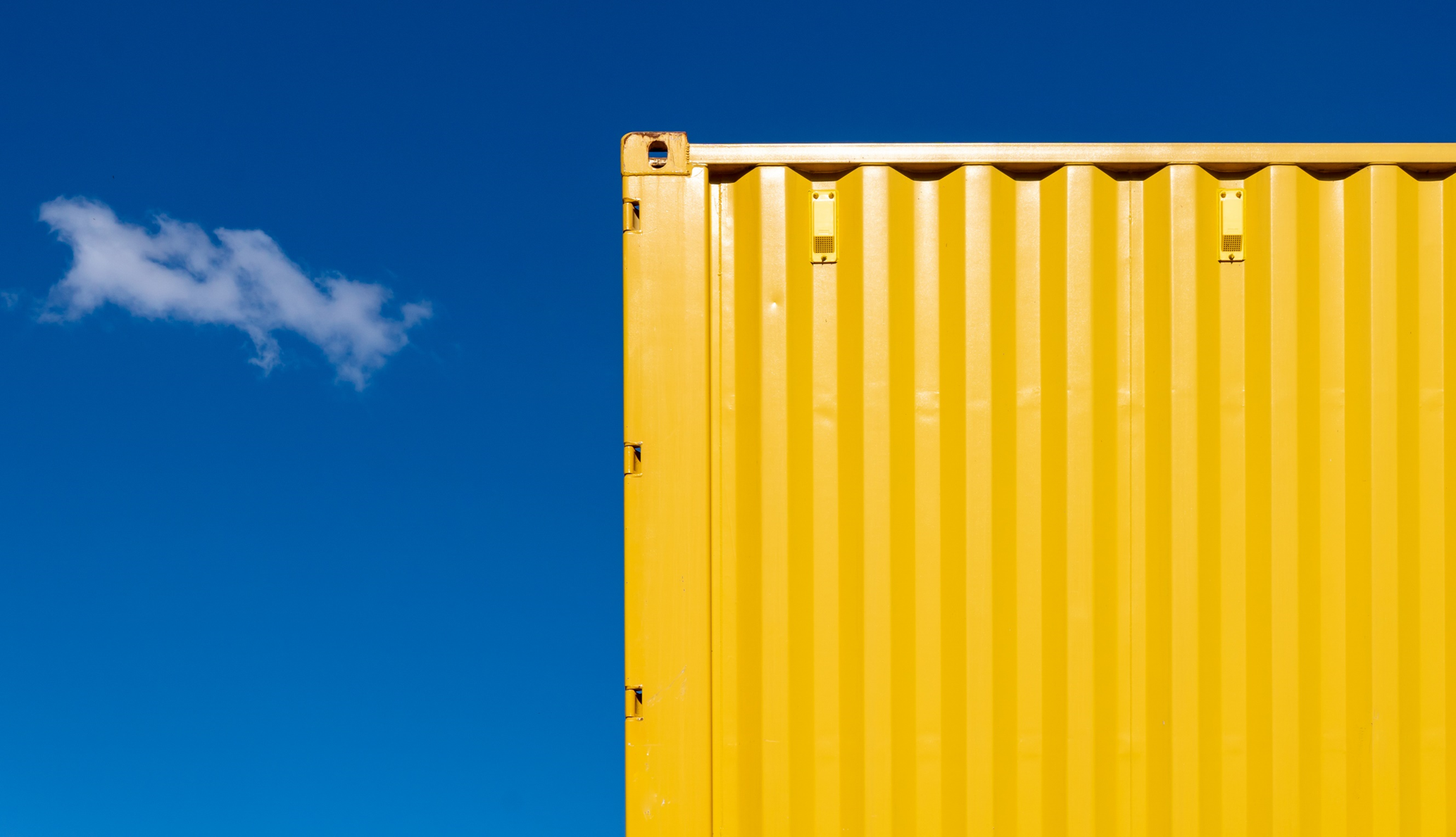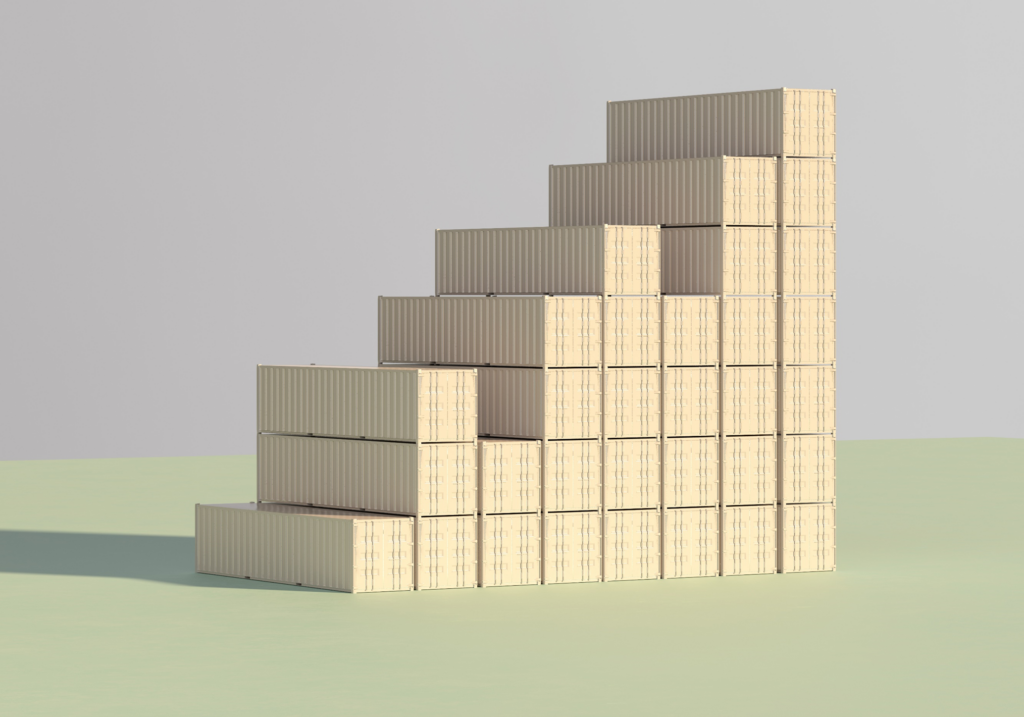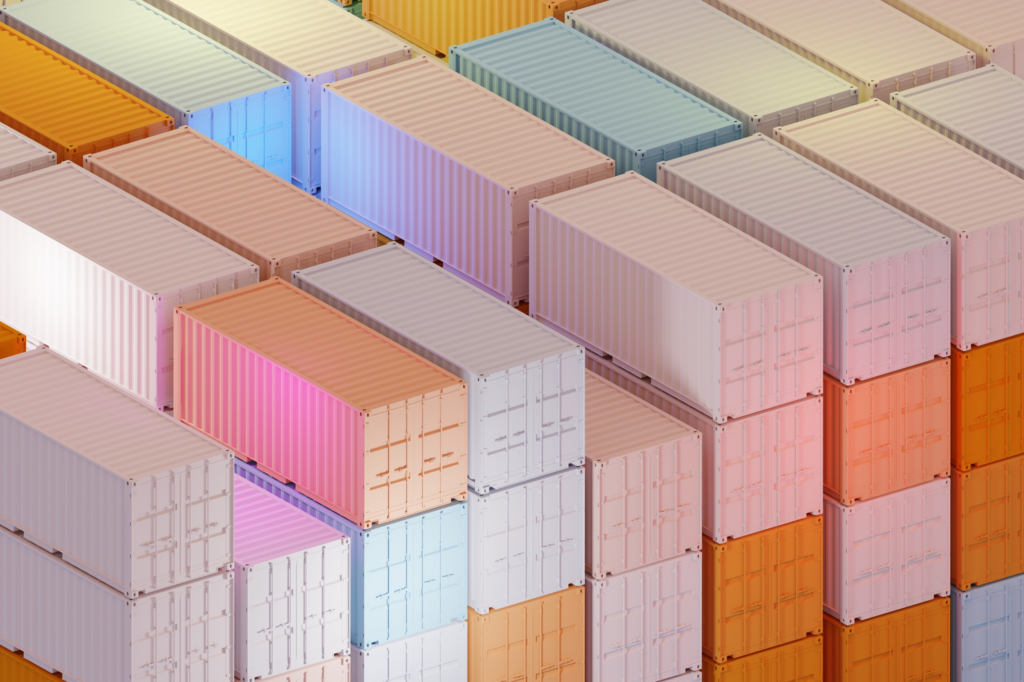1. Thinking inside the box
V@RR is a “believer” that current ESG and other trends in the world (of transportation) could favour further (specialized) containerization despite earlier failures on the concept. We think that usage of “special containers” can work on dedicated trades by delivering increased logistics chain efficiency and flexibility, reduce trade transportation imbalances and therefore emissions, increase safety levels, reduce costs and improve bottom line results.
The container and dry bulk trades have – broadly speaking – a kind of opposite direction in the imbalances. Is there a perfect match in the make to boost a next round of containerization?
Specialized (or smart) container concepts, including foldable and/or multi-cargo combination containers dedicated to certain trades/cargoes, may finally outgrow the conceptual phase now. The growth though will be different from what we have seen in the past for the mainstream container trade. It is likely to happen in a more customized fashion using (semi-) special containers with focus on cargoes that were originally more characterized as dry bulk trades.

2. Some perspective on the earlier success of containerization
The container concept was driven by the desire to:
- reduce the long port time, % damage and pilferage of break bulk cargoes
- enable increased intermodal transportation using multiple modes of transportation
The success factors of containerization are:
- Standardization: the simple and standard design (a worldwide accepted standard) facilitated easier handling and ability to stack containers
- Increased handling efficiency: the increased standardization resulted in improved (un)loading times reducing turnaround times in ports and resulting in lower shipping costs and improved supply chain management
- Improved intermodal transportation: standard design resulting in easier usage of inter modal transportation without the need to unpack the contents, streamlining logistics and enhancing connectivity
- Security & Protection of content: reduction of damage and theft which is particularly important to high(er) value and/or fragile products
Since the mid ‘60’s container trade has grown significantly. It is our rough estimate that 1/3rd of the world fleet today is comprised by dry bulk vessels, 1/3rd by tankers, 1/9th by general cargo and 2/9th by container vessels (measured in Dwt). From a cargo value (and probably profit margin) perspective however containers represent more than 50%, dry bulk represents less than 10% and the remaining part is more or less split between general cargo and tankers.
Containerized cargo typically includes the higher value/margin cargo which is more sensitive to time, flexibility and theft. Further the (destination of the cargo) often has a more granular nature than typical commodity cargoes do – requiring intermodal approach.
Containerization till roughly 2010 showed a rapid growth because more and more cargoes were transported by containers and offshoring was the name of the game. Thereafter the growth became more aligned with the ebb and flow of the GDP development and growth was more moderate while markets matured.
Good to realize for the further considerations is to understand what makes a cargo typically suitable for dry bulk transportation:
- Commodities representing lower value/margin cargo and higher volume suit dry bulk
- Commodities requiring blending to create a uniform consistent grade
- Mostly using dedicated terminals used for storage and compiling volumes required for bulk shipments and often resulting in lowest labor costs in handling – but at the same time they also carry cost when no material is (un)loaded.
- Shipments are not that time-sensitive and the cargo often has some form of seasonality (not always)

3. New trends supporting containerization 3.0 – “Thinking inside the Box”
The container system so far is (obviously) based on old thinking whereby scarcity and cost were defined differently than (where we are heading) today. Recent (extreme) congestion situations make economists realize that (container) transportation is no longer just an available commodity following economic trends but can become a serious bottleneck influencing economic development. Further:
- Emissions are increasingly seen and treated as a cost to society and asking for different thinking when it comes to trade optimization
- Reduction of ballasting trips / repositioning of empties is of increasing importance
- Definitions of what cargo is considered a commodity and what is a scarce/valuable product is under change
- Higher demand for granularity/just in time delivery of certain products
- Increased ESG regulation also asks for further attention to safety and governance compliance which may change the views on current logistics processes used.
Various trends and changes are recognized that could influence the way transportation is organized. To mention a few:
- Increasing regulatory push towards net zero emissions in transportation
- Changes in manufacturing processes and which cargoes are (considered) valuable
- Increasing trade imbalances in all modes of transportation and shipping sectors – with a (too) high relative share of “air transportation”.
- Need to reduce emissions, particulate matters, etc. and therefore the need to reduce transportation and (un)loading moves relative to volumes transported
- Scarcity of space in general and in ports in specific, increased congestion
- Call for smarter logistics using self-organizing and more autonomous systems (in ports)
- Increasing demand for intermodal transportation allowing for flexibility (also in case of heavy congestion) whereby transshipment costs and time are increasingly important
- Higher awareness of social and safety requirements along ESG standards and governance in general
Name of the game = higher efficiency and flexibility with increased safety levels – to result in faster turnaround with less emissions of GHG, particulate matters and for sure a reduction of “air transportation” by reducing ballast legs and repositioning of empties. Whichever fuel and engine type is used going forward – a gain in efficiency and safety is always beneficial.

4. Further considerations on Containerization 3.0 – reducing imbalances
Questions that come to (V@RR’s) mind in this respect is:
- Is it easier to move certain containerized cargo as bulk or vice versa?
- Is ongoing automation, digitalization etc in favor of dry bulk or a containerized approach
- Is it dry bulk or containerized cargo that is more suitable for faster transit time, requiring less space and reducing air pollution as a result of transshipment
- Which mode of transportation is more favorable to intermodal transportation– dry bulk or containerized cargo?
- Are certain commodities shifting towards more valuable cargo or is it that certain containerized cargo becomes more low value / bulk characterized?
- Will the even higher focus on safety and need to comply with regulations require changes to certain existing logistics processes?

